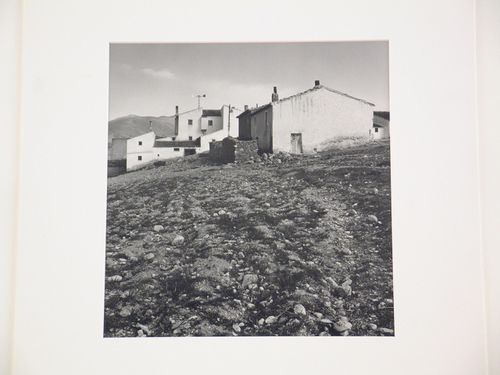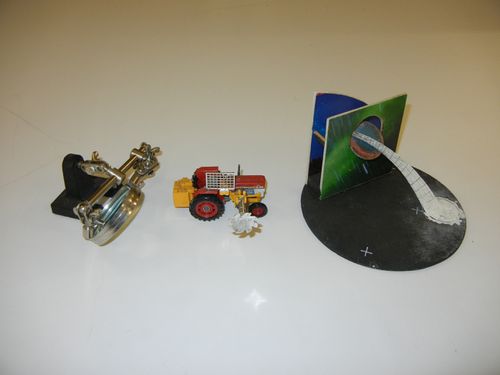documents textuels
DR2004:0248
1973
documents textuels
1973
documents textuels
ARCH104023
Description:
correspondence, clippings
1931-1932, 1944
documents textuels
1931-1932, 1944
Projet
Architecture I, Leo Castelli
AP140.S2.SS3.D6
Description:
File documents the participation of the office of James Stirling and Partner to the Architecture I exhibition at Leo Castelli, in New York City, New York, United States. Material in this file was produced in 1977. File contains photographs of exhibition by photographer Bevan Davies.
1977
Architecture I, Leo Castelli
Actions:
AP140.S2.SS3.D6
Description:
File documents the participation of the office of James Stirling and Partner to the Architecture I exhibition at Leo Castelli, in New York City, New York, United States. Material in this file was produced in 1977. File contains photographs of exhibition by photographer Bevan Davies.
File 6
1977
Série(s)
Une architecture des humeurs
AP193.S4
Description:
Series 4, Une architecture des humeurs, 2008-2011, documents the conception and the presentation of exhibition and project Une architecture des humeurs. Presented at Le laboratoire art gallery in Paris between January and May 2010, Une architecture des humeurs is a conceptual, unbuilt, residential urban structure based on a potential future in which contemporary science reads human physiology and chemical balance. The idea is to acquire a chemistry of the “humors”, or the moods and temperament, of future purchasers. Taken as input, the information generates a diversity of habitable morphologies and relationships between them. With this process, the project attempts to make palpable and graspable, through technologies, the emotions of the participants captured via the chemistry of their body. The goal is to gather information on their capacity of adaptation, their level of sympathy and empathy while confronted to a situation or an environment. This information is then analyzed by computational, mathematical, and machinist procedures. This leads to the design and production of an urban structure submitted to the improbable and uncertain protocols produced by emotions, also creating aggregations and layouts that rearticulate the links between the individual and the collective. These structures are calculated following simultaneously incremental and recursive structural optimization protocols resulting in the physicality and morphology of architecture. The layout of the residential units and the structural trajectories are conceived and developed as posterior to the constructs supporting social life and not as an a priori. The structure of each components of the urban structure is generated by a secretion and weaving machine called Viab02. The machine is the second prototype of VIAB which was developed with Robotics Research Lab of the University of Southern California and takes its name from the terms viability and variability. With a process similar to contour crafting, the machine produces bio-cement, a mix between cement and bio-resin, giving form to the adapted residential structures. The records consist largely of images detailing the creative process of the firm, photographs of the exhibition, and 3D models. It also contains animated renderings representing the machine in action and sequences of the construction of the building or the structure. The records include a video orienting the project into François Roche theoretical stance, research as speculation, that can be summarize as the use of technological tools to take a critical and political position through esthetic in order to open new lines of thoughts. AP193.S2 contains updated previous version of the VIAB machine
2008-2011
Une architecture des humeurs
Actions:
AP193.S4
Description:
Series 4, Une architecture des humeurs, 2008-2011, documents the conception and the presentation of exhibition and project Une architecture des humeurs. Presented at Le laboratoire art gallery in Paris between January and May 2010, Une architecture des humeurs is a conceptual, unbuilt, residential urban structure based on a potential future in which contemporary science reads human physiology and chemical balance. The idea is to acquire a chemistry of the “humors”, or the moods and temperament, of future purchasers. Taken as input, the information generates a diversity of habitable morphologies and relationships between them. With this process, the project attempts to make palpable and graspable, through technologies, the emotions of the participants captured via the chemistry of their body. The goal is to gather information on their capacity of adaptation, their level of sympathy and empathy while confronted to a situation or an environment. This information is then analyzed by computational, mathematical, and machinist procedures. This leads to the design and production of an urban structure submitted to the improbable and uncertain protocols produced by emotions, also creating aggregations and layouts that rearticulate the links between the individual and the collective. These structures are calculated following simultaneously incremental and recursive structural optimization protocols resulting in the physicality and morphology of architecture. The layout of the residential units and the structural trajectories are conceived and developed as posterior to the constructs supporting social life and not as an a priori. The structure of each components of the urban structure is generated by a secretion and weaving machine called Viab02. The machine is the second prototype of VIAB which was developed with Robotics Research Lab of the University of Southern California and takes its name from the terms viability and variability. With a process similar to contour crafting, the machine produces bio-cement, a mix between cement and bio-resin, giving form to the adapted residential structures. The records consist largely of images detailing the creative process of the firm, photographs of the exhibition, and 3D models. It also contains animated renderings representing the machine in action and sequences of the construction of the building or the structure. The records include a video orienting the project into François Roche theoretical stance, research as speculation, that can be summarize as the use of technological tools to take a critical and political position through esthetic in order to open new lines of thoughts. AP193.S2 contains updated previous version of the VIAB machine
Series
2008-2011
documents textuels
AP197.S1.SS4.017
circa 1970-1980
documents textuels
circa 1970-1980
Rural architecture in Spain
PH2000:0679
architecture
1957
architecture
ARCH280689
ca. 1970-1971
documents textuels
DR2012:0015:023:017
Description:
Assorted publications, including: - DMG-DRS Journal: Design Research and Methods (formerly DMG Newsletter), vol. 7, no. 3; - Centre d'études et de recherches architecturales, URSS: supplément au bulletin d'information inter-éstablissements, 21 février 1977.
1973, 1977
Architecture and design publications
Actions:
DR2012:0015:023:017
Description:
Assorted publications, including: - DMG-DRS Journal: Design Research and Methods (formerly DMG Newsletter), vol. 7, no. 3; - Centre d'études et de recherches architecturales, URSS: supplément au bulletin d'information inter-éstablissements, 21 février 1977.
documents textuels
1973, 1977
documents textuels
AP206.S4.072
1990
documents textuels
1990
livres, photographies
Notes on Irish Architecture.
PH1981:0201.01:001-065
published 1875
livres, photographies
published 1875

